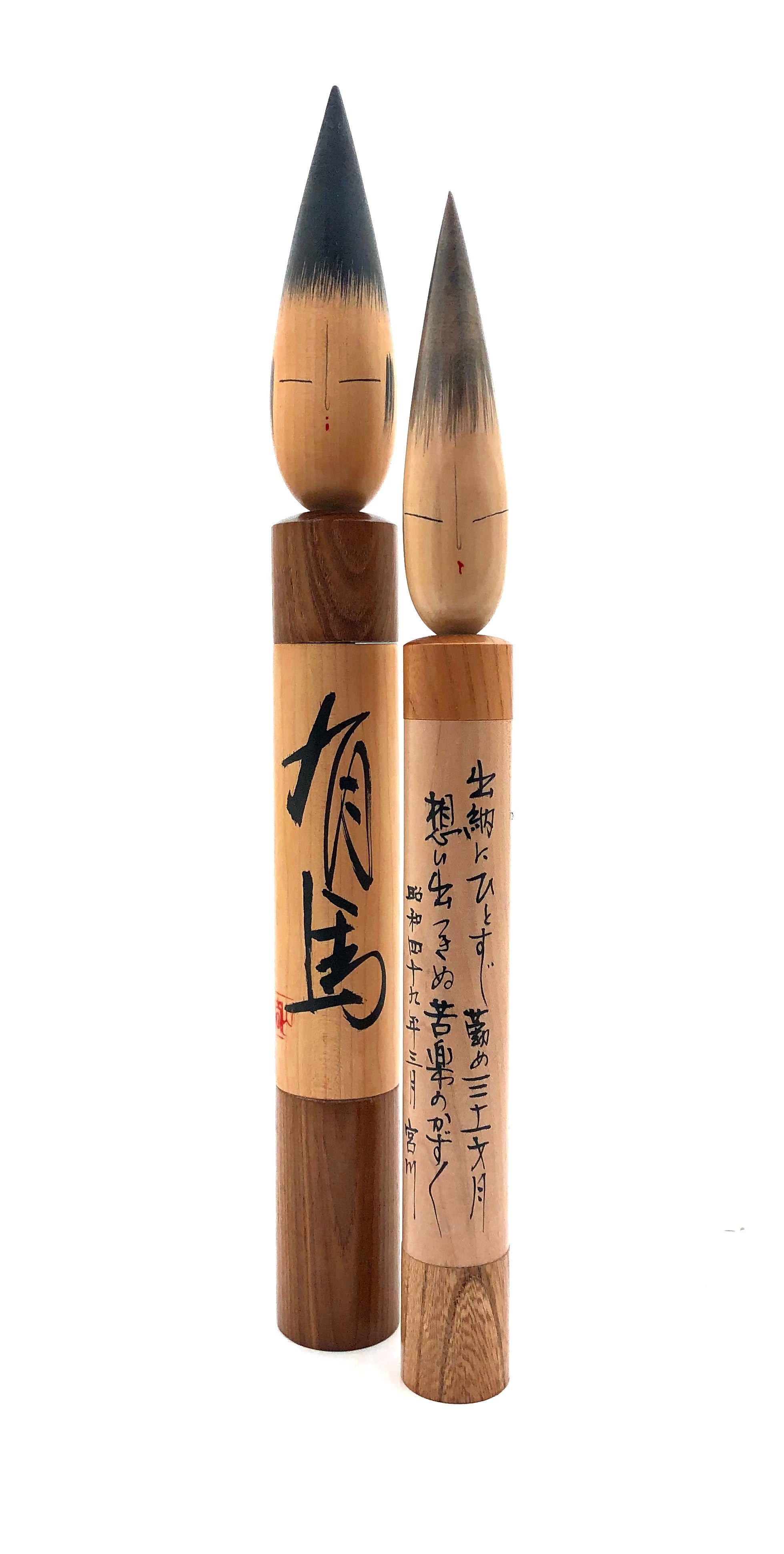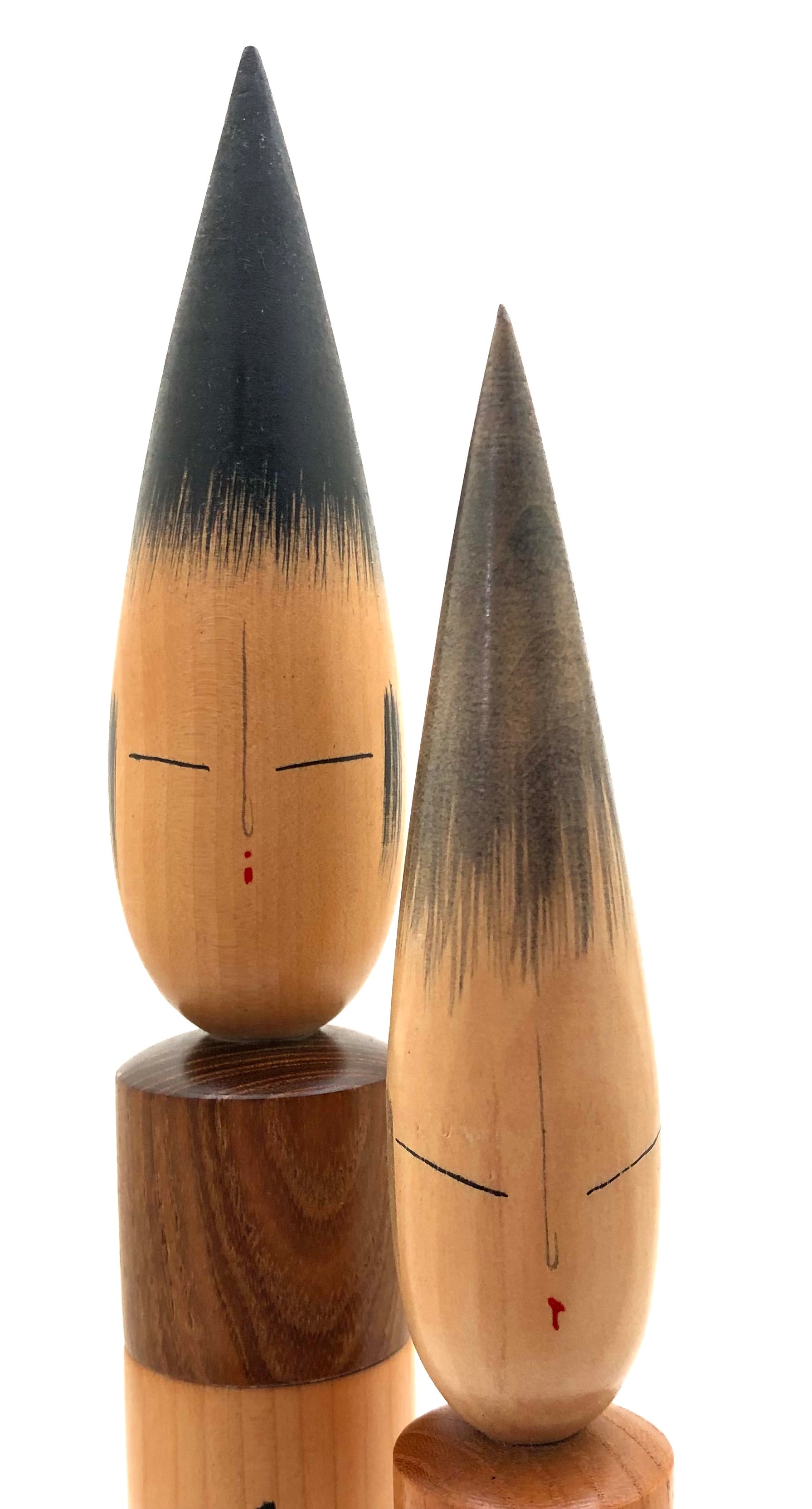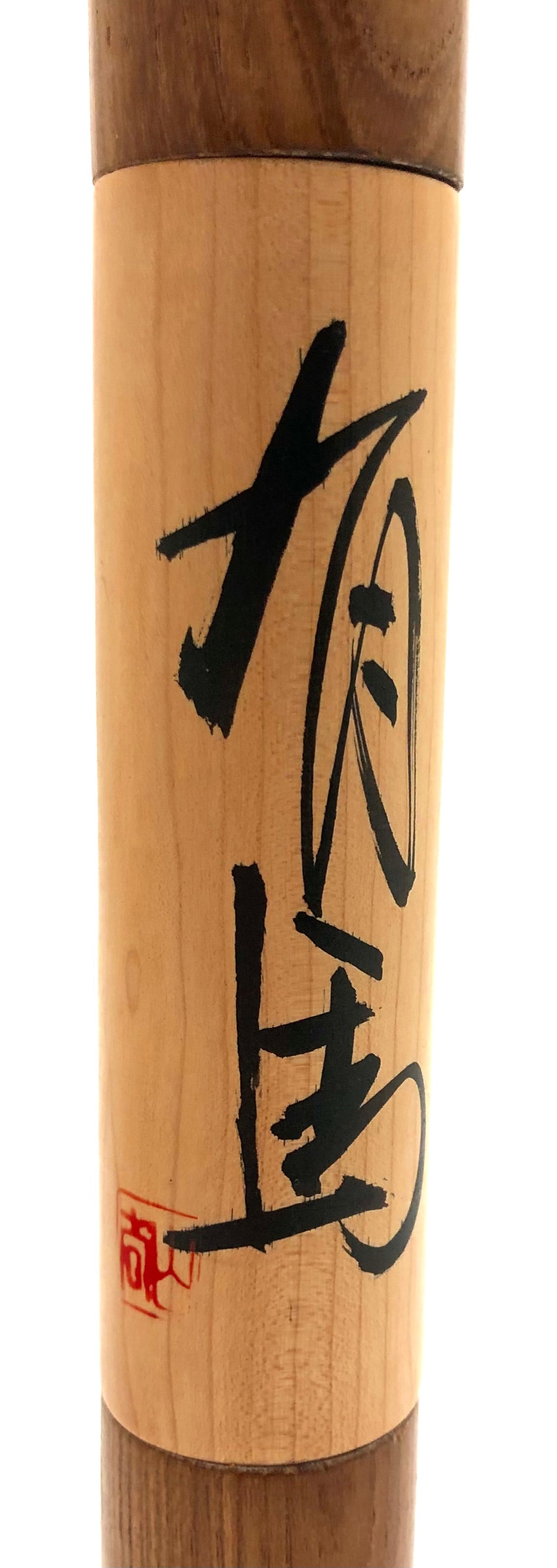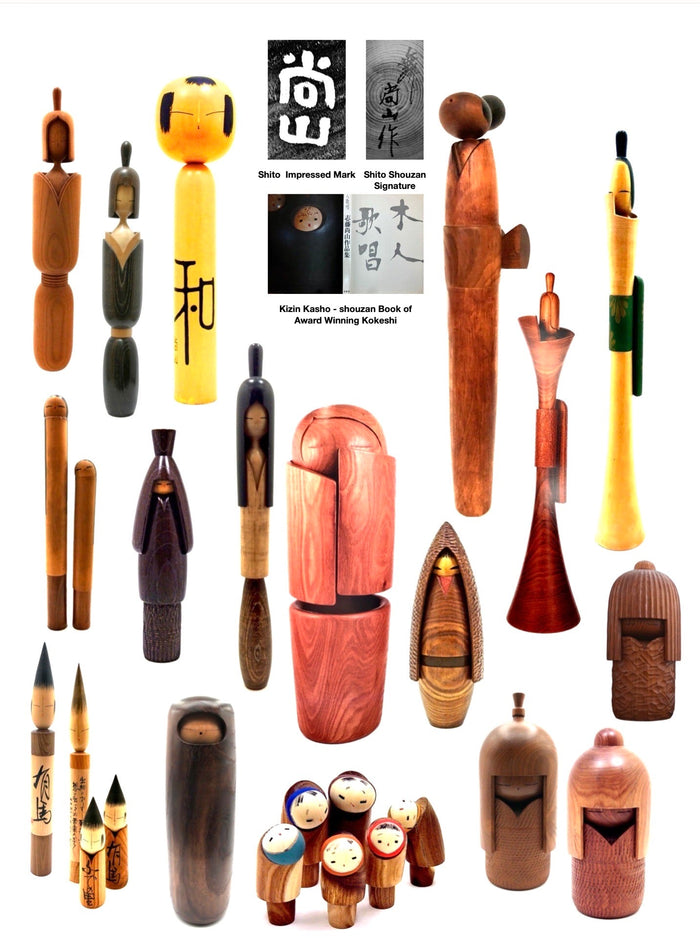



Vintage Japanese Sosaku Kokeshi "Fude" | Brush set by Shouzan, Shido
Dimensions: 17-1/2”h; 16-0”h
This piece was inspired by a Sumi-e drawing brush and was the basis for this unusual Shouzan-san design in Kokeshi form and a tribute to a village named Arima which is famous for calligraphy brush designs. The Fude, or brush, has been integral to Japanese culture since the introduction of standardized writing systems from the continent of Asia in the fifth century. The Art of Shodo, (calligraphy, employing Japanese kana characters), has been held in high esteem, and become “a powerful way to inculcate the values of Bushido”, and a means of communication, as well as the Zen practice that evokes harmony and wisdom.
These interesting doll forms are minimalistic, and use the natural wood to its full potential. Representing a short shaft brush, it shows a simulation of upside-down bristles representing the doll's black hair, with simple serene, and calm Sumi-e executed faces and traditional side hair fringes. Both kokeshi stands out for the natural color of the wood with visible grain and thick staffs, with a tapered simulated brush shape. Each has calligraphy on the front of the bodies with the tallest doll on the left interpreted as “Arima”, with the one on the right with a poem about this famous “village of brushes". This pair is an original work by award-winning kokeshi artist Shido Shouzan (1932-1996). Born in Oita Prefecture, he began making kokeshi in 1957 and is considered by collectors to be one of the most influential artists in the world of creative kokeshi. Each with Shouzan’s red impressed stamp on the side of the largest figure and his signature on the right doll.
See additional writings on our website related to this subject: Under our Browse and Learn section, please refer to https://mingeiarts.com/collections/artisan-woodworker-shido-shozan-1932-1995 for full details on the history and development of his work.
Condition: Being a period piece, each doll has no stains or imperfections, and considered in excellent original condition, and retains the original craft/workmanship showing a wonderfully developed, untouched patina commensurate with age. The set of dolls meets all the standards of Sosaku Kokeshi collectibles and is a wonderful set to round out a collection of Shido Shouzan.

Artisan
Woodworker: Shido, Shouzan
1932-1995
Biographical History:
Shouzan began making Sosaku Kokeshi in 1959, soon after he graduated from Chuo University with a law degree. He is considered by Kokeshi collectors and critics alike to be arguably the most influential artist in the world of Sosaku Kokeshi doll-making. Shido-san’s main focus was depicting unadorned Northern girls in the traditional “Mino”, or Snow Coat, but he also produced tall, thin dolls, which were sparsely decorated. His keen sense of design, minimal use of color, and simple elegant shapes set him apart from his peers, making him one of the most collectible artists emerging from the creative period of the ‘60s winning various awards since 1961. He served as a judge of the All Japan Kokeshi Contest from 1970 to 1976. During that time Shozan published a book entitled Kizin Kasho comprising examples of his award-winning Kokeshi. His dolls have been collected and exhibited worldwide and winner of the Prime Minister’s Award, among many other awards.
Collector's note – descriptive qualities, standard characteristics & ornamentation styles:
Shito-san loved studying the use of combining different types of wood to gain the desired effect and to give dimension to his pieces. He also enjoyed creating slender, tall dolls to support the fact that they resemble the tall, thin trees seen throughout Japan. He incorporated a repetitive textural pattern called ‘Harmonic Chatter work’ to enhance the natural qualities of the wood in many of his works. He particularly enjoyed the textural qualities of ‘Chattering’ on the rain/snow coat, (Minomushi), which is a favorite theme, executed with minimal painted ornamentation, with an emphasis on the natural wood. In general, it is said that Japanese culture is one of modesty and humility. Occasionally saw different types of headdresses, one of which he called a ‘Tsunokakushi’, which is a wide headdress or hood, that covered elaborate hairstyles. We are told that the Japanese people regulate their behavior and response by reading faces and the eyes of others. Here, as well as elsewhere, you will see many examples of different characteristics of the eye's expressions. His most famous doll, which was considered a favorite was called “Mai”, a dancer, which was an elegant and slender doll with a beautifully formed Kimono focusing on traditional hair design (Mage) with an emphasis on a brightly colored “obi” which brings forth the best use of complex geometry to create traditional Japanese clothing elements which were created in 1970.
Shito-san was a prolific artist/woodworker of Kokeshi dolls some of which were whimsical, some focusing on calligraphy citing haiku (poems). We additionally see unusual subjects focused on Zen Buddhism and figures of Daruma, (Bodhidharma) of which most were made in a “roly-poly” type figure seen throughout festivals in Japan.
Explore & Learn More about Woodworker: Shido, Shouzan